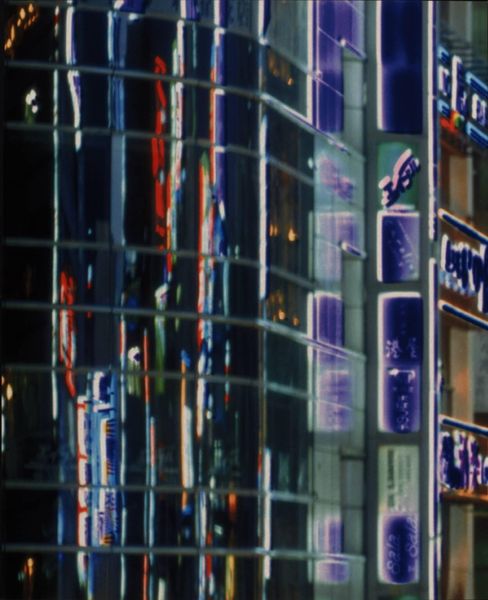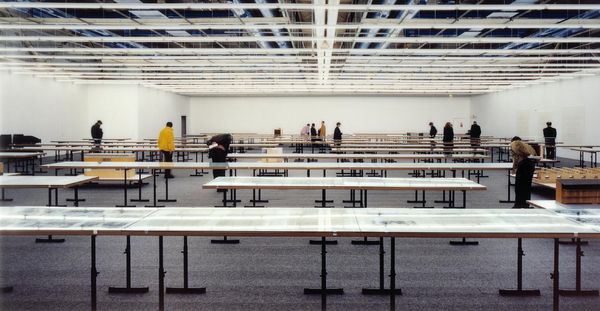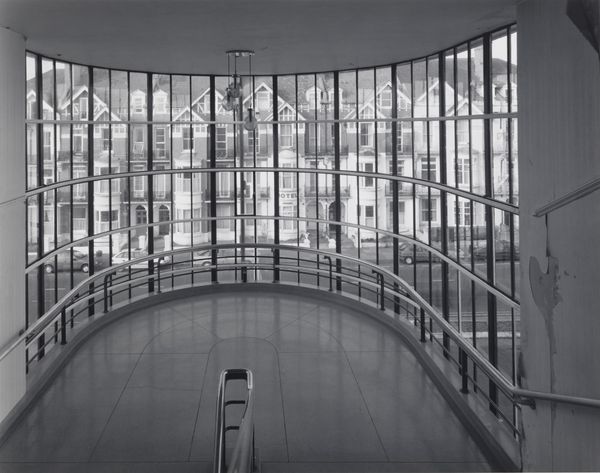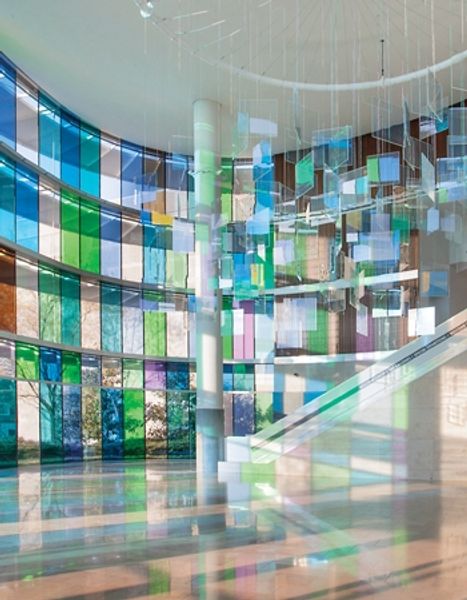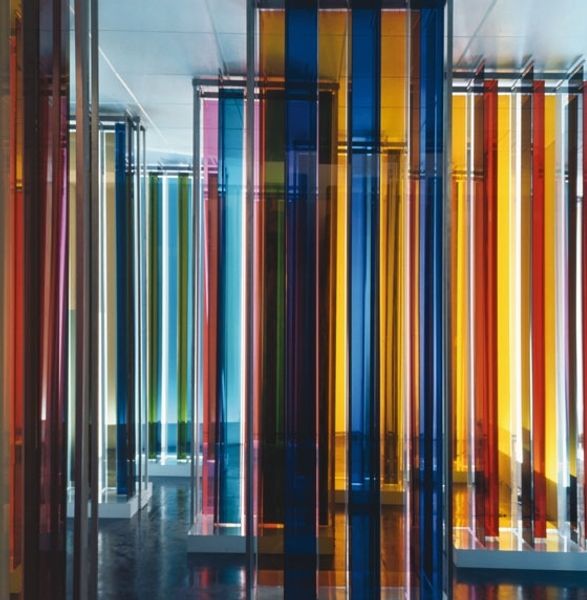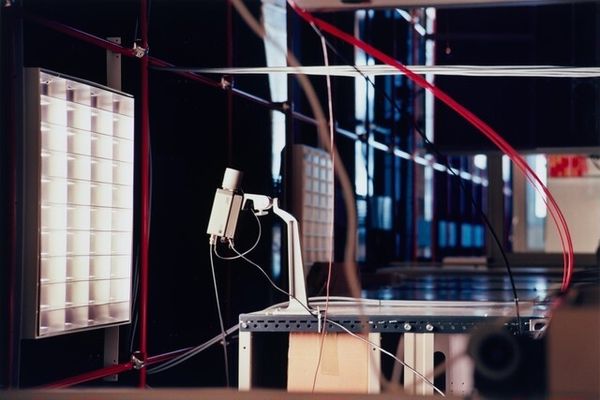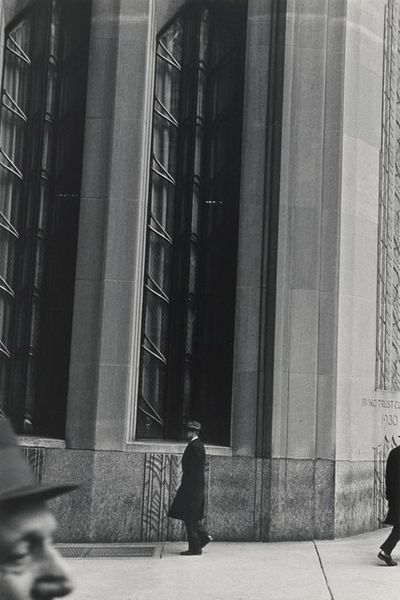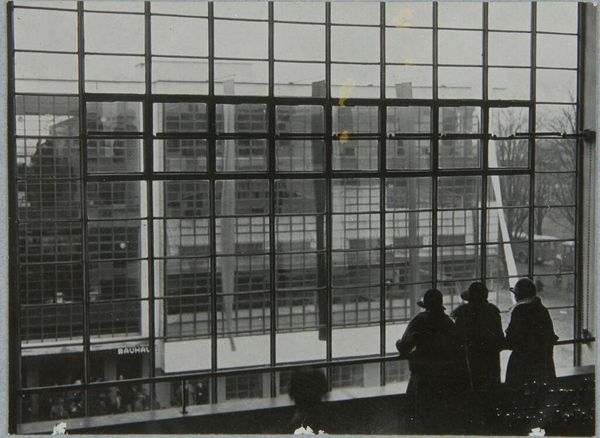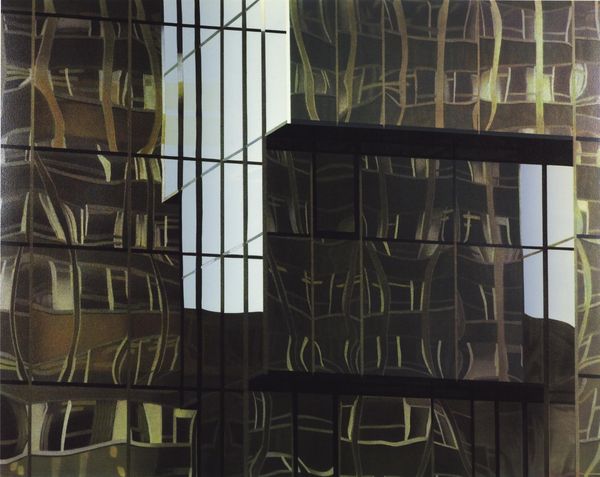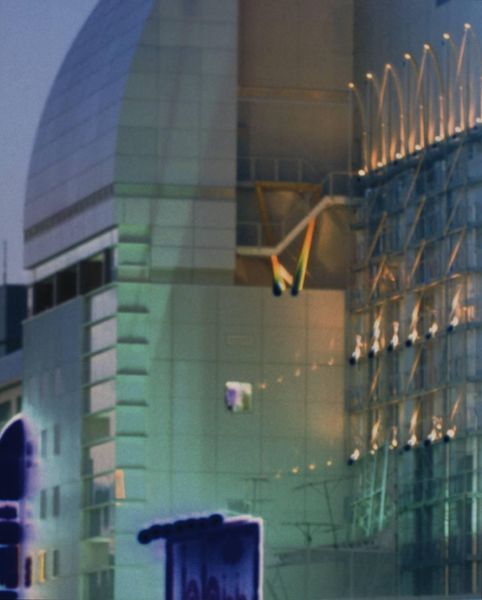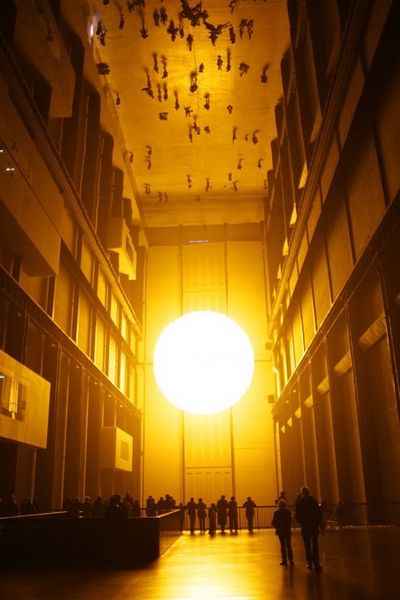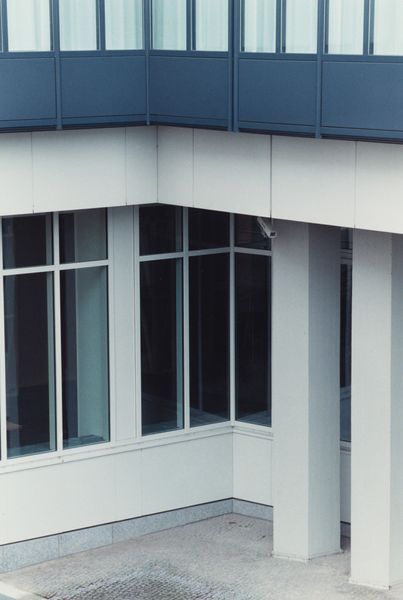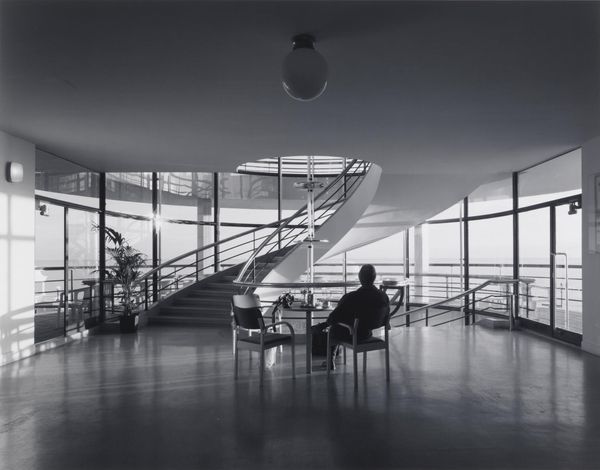
Dimensions: image: 2370 x 1645 mm
Copyright: © Courtesy Monika Sprueth Galerie, Koeln / VG Bild-Kunst, Bonn and DACS, London 2014 | CC-BY-NC-ND 4.0 DEED, Photo: Tate
Curator: Gursky’s “Parliament” presents us with this imposing, almost overwhelming, image of political process. My first thought? It feels like looking into an aquarium. So many creatures, all in their own zones, yet contained. Editor: Andreas Gursky, born in 1955, is well-known for his large-format architectural shots. Here, he captures the grand scale of a parliamentary chamber. It evokes the institution's intended openness. Curator: Openness, sure, but also this remove, this... distance. We're outside looking in, aren't we? Observing, judging. It almost makes me feel voyeuristic. Editor: Precisely. Gursky often explores themes of globalization and surveillance. He’s inviting us to reflect on how we perceive and participate in these systems. Curator: It’s intriguing how the grid of windows both frames and fragments the scene, making it feel like multiple realities existing in parallel. It’s beautiful and frightening. Editor: Gursky presents a vision of political space that is simultaneously accessible and impenetrable, highlighting the tension between democratic ideals and institutional realities. Curator: Well, I for one, feel both implicated and detached. I wonder if that’s the point. Editor: Indeed, it leaves us pondering our own role in this complex world.
Comments
Join the conversation
Join millions of artists and users on Artera today and experience the ultimate creative platform.
tate 8 months ago
⋮
Parliament 1998 is a vertically oriented colour photograph by the German artist Andreas Gursky that is nearly two and a half metres tall and more than a metre and a half wide. Taken from an elevated perspective and seemingly through a window, the photograph depicts the assembly hall of the German parliament (Bundestag) in Bonn. The gridded pattern of the window frames through which the scene is captured divides the composition into four horizontal bands. In the bottom two sections of the image, groups of politicians can be seen standing on the floor of the hall and among its curving rows of desks with their bright blue seats. The upper two sections of the scene feature a public gallery overlooking the hall and, at the very top of the composition, a reflection of the scene below in which the floor, desk and blue seating areas are inverted. Although the photograph is of a very high resolution, blurring and refraction are evident in places throughout (especially in its lowest section) and the fragmented impression created by the window bars is heightened by Gursky’s digital manipulation of the image. For instance, in the centre of the work, one rectangular area of the public gallery appears to have been overlaid onto a separate image of the interior, as is suggested by the differences in colour and the number of people sitting on its benches. Furthermore, it is difficult to see what might be the cause of the inverted or reflected section at the top of the photograph, which suggests that it has been added by Gursky digitally. Tate’s copy of Parliament is one of an edition of six.
